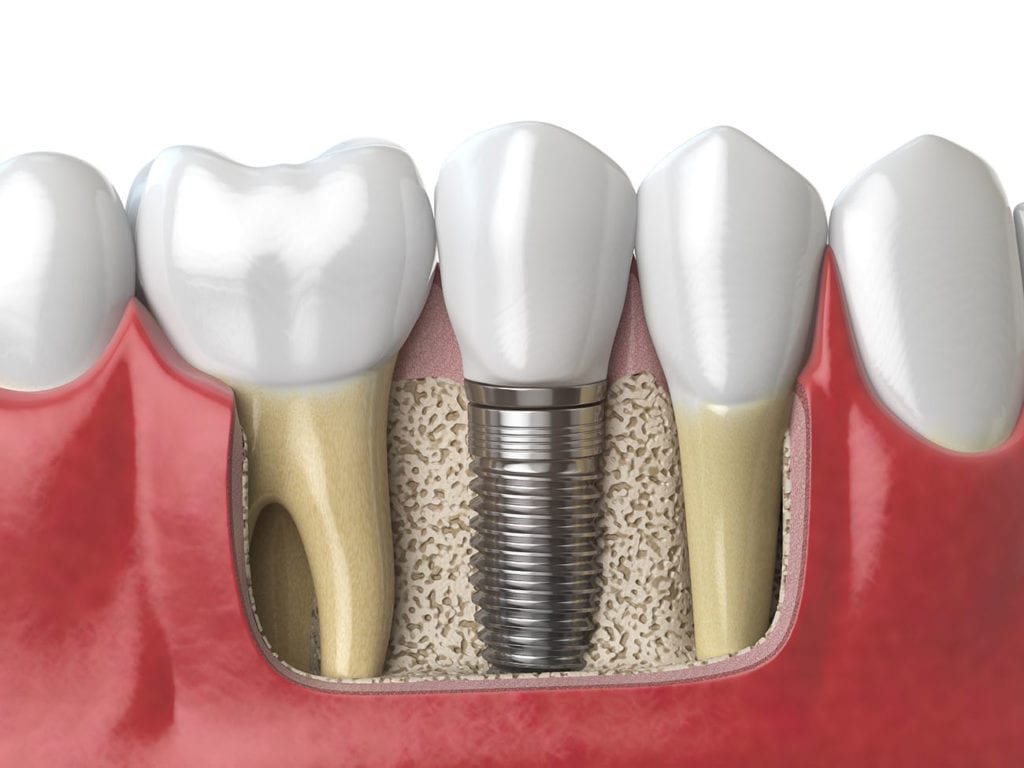Contents
Is Wisdom tooth extraction necessary?
Whether wisdom teeth should be extracted right away and whether it is dangerous to remove wisdom teeth is a question many people ask. According to doctors, wisdom teeth should be extracted as soon as possible to avoid complications. Specific information is included in the article below.

When is there an indication to remove wisdom teeth?
Wisdom tooth or the third molar is indicated to be removed when they erupt and cause complications such as swollen gums, prolonged jaw pain, repeated infections, cysts, periodontitis, especially when they affect the teeth around the jaw.
Wisdom teeth often grow deeply at the back of the jaw and grow in adulthood. Thus, when the teeth come in, the jaw bone has run out of space, this tooth must grow through the gums to emerge. Cracking the gums causes bleeding and inflammation of the gums.
These teeth interfere with the customer’s daily activities, especially when chewing and cleaning teeth.
Sometimes, wisdom teeth grow in a favorable position but still affect the surrounding teeth. Specifically, the chewing surface of the teeth contains a lot of food deposits and plaque, so it causes tooth decay.
In other cases, wisdom teeth grow only on one side, making the other side unable to match the jaw arch, leading to this tooth gradually becoming longer, piercing the opposite gum.
These teeth are thought to be not dangerous, but they are easy to cause many dental diseases if left for a long time. This is also part of the answer to whether wisdom teeth should be removed.
Does Wisdom tooth extraction cause any complications?
Wisdom tooth extraction does not cause serious complications for the teeth. There are many modern machines and technologies that support the safe extraction of teeth. However, not all dental facilities have a team of experienced doctors to ensure 100% that no complications occur.
Some complications occur if wisdom teeth are extracted at an unreliable address and customers do not know how to take care of them after extraction.
- Infection: manifested as high fever, slow healing, yellow or white discharge spreading to other areas.
- Nerve damage in the tooth: stinging, numbness in the tongue, numbness of the lower lip, numbness of the teeth.
- Septicemia: manifestations of septicemia are prolonged high fever, chills, toothache, gingivitis
- Inflammation of the Wisdom tooth socket: manifested as bad breath, toothache, eroded teeth.
Why should wisdom teeth be extracted?
Wisdom teeth cause a lot of trouble for adults. So we need to remove them immediately.
Time and location of the eruption of wisdom teeth
Wisdom teeth usually erupt when we reach adulthood, i.e. over 18 years old, commonly between the ages of 20 and 26. This tooth is located at the last position of the arch. When the permanent teeth have all grown, there is no more room for new teeth, this tooth will pierce through the gum to grow in.
They can grow in any shape and position and are often misaligned, also not as big and beautiful as other molars.
Some diseases caused by wisdom teeth
Wisdom teeth cause a lot of discomfort to us, especially serious diseases if not detected and treated in time.
Cavities, gingivitis due to growing in dangerous places
Wisdom teeth are the last teeth to erupt, they also erupt in a very difficult position to clean and observe. Excess food will stick to the wisdom teeth and bring along the bacteria. The bacterial drive damages tooth enamel, forming plaque under the teeth (tartar).
Enamel is eroded by tooth decay, turning black and pitted. They cause diseases such as tooth decay, severe periodontitis, gingivitis covering wisdom teeth, swollen gums and pus inside.
Bone and tooth number 7 destroyed
When wisdom teeth grow out of alignment and turn to collide with the second molar, they will partly affect the bone of this molar, causing bone loss, tooth weakness, wobbly teeth, and crooked teeth. If this situation persists, it may even have to remove the second molar.
This situation indirectly causes the displacement of the succeeding teeth, reducing the ability to chew and esthetic teeth.
Is Wisdom tooth extraction scary?
In addition to the question of whether wisdom teeth should be removed, there are many customers who are worried about Wisdom tooth extraction with pain, bleeding and danger. How does the doctor answer?
What are the risks of removing wisdom teeth?
Wisdom tooth is a molar with a lot of nerves. Therefore, the impact and extraction can affect all other teeth.
If the dentist performing Wisdom tooth extraction is inexperienced and the customer does not know how to take care of dental health, it will cause dangerous complications such as:
- Pain, inflammation, swelling lasting for a long time (3 to 8 weeks)
- Infection of the alveolar bone, there is a risk of tooth abscess
- Losing a lot of blood, bleeding every day
- Affects the nerves, with manifests such as numbness of the lips, chin, hearing loss, itching in the lips and tongue …
Note:
Although tooth extraction is not dangerous, there is still a risk of other oral diseases. However, customers can rest assured because with difficult cases, we can apply modern Piezotome ultrasonic tooth extraction technology. This technology offers many outstanding advantages such as:
- Painless: Because of the use of high-frequency ultrasound, it is easy to peel off tissues and gums to gently remove the root of the tooth.
- Safe for health: ultrasonic waves from Piezotome technology have the ability to accurately determine the position of the teeth to be extracted, which can minimize the impact on the nerves and blood vessels around the teeth.
- Save treatment time: the process of tooth extraction with ultrasound takes about 15-30 minutes. The client does not have to go through much pain and can leave quickly.
- Quick wound healing: superior technology from Piezotome has the ability to lock blood vessels and helps open wounds to heal faster.
The process of performing Wisdom tooth extraction
The standard procedure for tooth extraction consists of 4 steps:
Step 1: The doctor examines oral health
This scanning step will help the doctor identify the patient’s tooth condition. Diagnosis and prediction of risks in the oral cavity in the future. If the customer is suffering from dental diseases, the doctor will prescribe thorough treatment before then proceed to extract the tooth.
Step 2: Assess the status of wisdom teeth
Based on the status of wisdom teeth and adjacent molars. The doctor will give the appropriate instructions for tooth extraction. Wisdom teeth that grow straight, wisdom teeth that are impacted, and wisdom teeth that are misaligned all have their own treatment regimen.
Step 3: Local anesthesia
In order for the patient to be free from psychological pressure and pain, the doctor will inject a local anesthetic, then use specialized tools to remove the Wisdom tooth. During the extraction process, the instruments should be sterilized to ensure maximum safety for the patient. Specifically:
- With the traditional method of pulling pliers: The doctor uses a spatula to remove the teeth. When suitable, the doctor will use dental pliers to remove. With wisdom teeth that are impacted, it is necessary to make an incision in the gums and grind the teeth. Only then will the original incision be sutured.
- With the modern Piezotome method: The doctor projects the vibrational energy of ultrasound waves with high frequency. The goal is to affect the ligaments around the roots of the teeth. After a few seconds the ligaments will break. Finally, use pliers to pull out the teeth and apply collagen film around to heal the wound to heal quickly.
Step 4: Complete the tooth extraction
After the doctor removes the Wisdom tooth, the patient must bite on a cotton gauze pad to stop bleeding for about 5-10 minutes. After the anesthetic wears off, you can go back to self-care at home. The patient needs to be re-examined or have stitches removed according to the doctor’s schedule.
What should the patient pay attention to after removing wisdom teeth?
When answering the question of whether to remove wisdom teeth number 8, we need to understand how to take care of our teeth daily to protect the wound.
Daily diet
- Eat soft and dilute foods to reduce the force on the teeth. This allows the jawbone to relax and doesn’t have to do much work either.
- In the first 2 days: should not eat hard, tough or too cold, too hot foods to maintain the healing of the wound.
- Avoid drinking carbonated and alcoholic drinks, do not use stimulants.
- Do not smoke for the first 3 days. Cigarettes have very toxic ingredients, which can prolong inflammation.
- Drink 2 liters of water per day to support blood circulation and regenerate wounds quickly.
- Eat a lot of fruits and vegetables and supplement vitamins to increase the body’s resistance.
Oral hygiene
- Do not rinse your mouth vigorously and brush your teeth in the area that has just been extracted.
- To relieve pain, we can apply cold compress to the cheek area outside the extraction site. Ice constricts blood vessels, reduces inflammation and pain.
- Regularly gargle with concentrated tea or dilute salt water daily. These are “medicines” that have the ability to disinfect and prevent infection very well.
- Should use straws when drinking water to avoid water pressure on the newly extracted tooth.
So should wisdom teeth be extracted? The answer is yes. Early extraction of the third molar will help us avoid complications that cause diseases in the oral cavity. Find the best dental address with highly qualified dentists and modern facilities for the safest and most painless tooth extraction.















